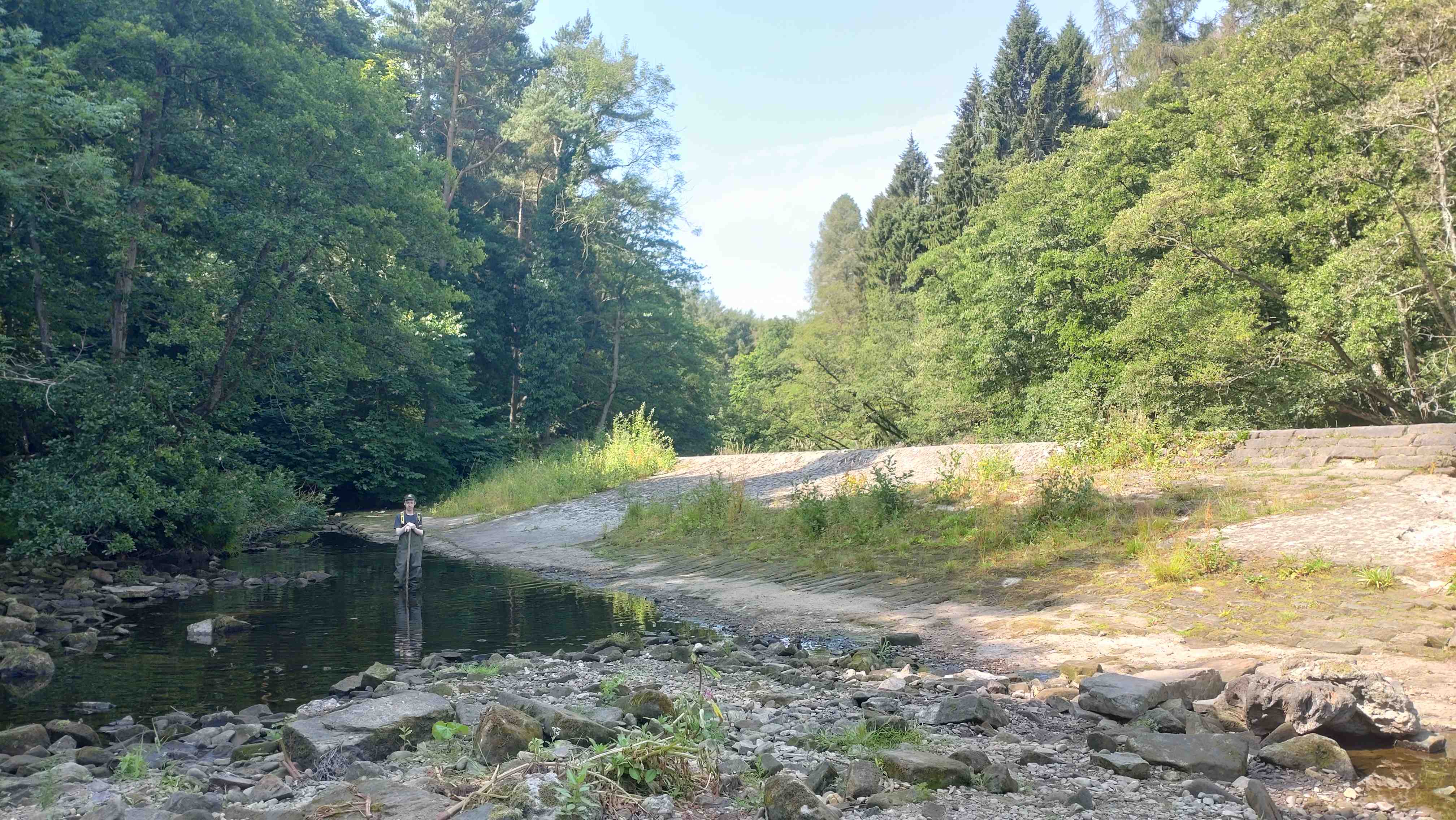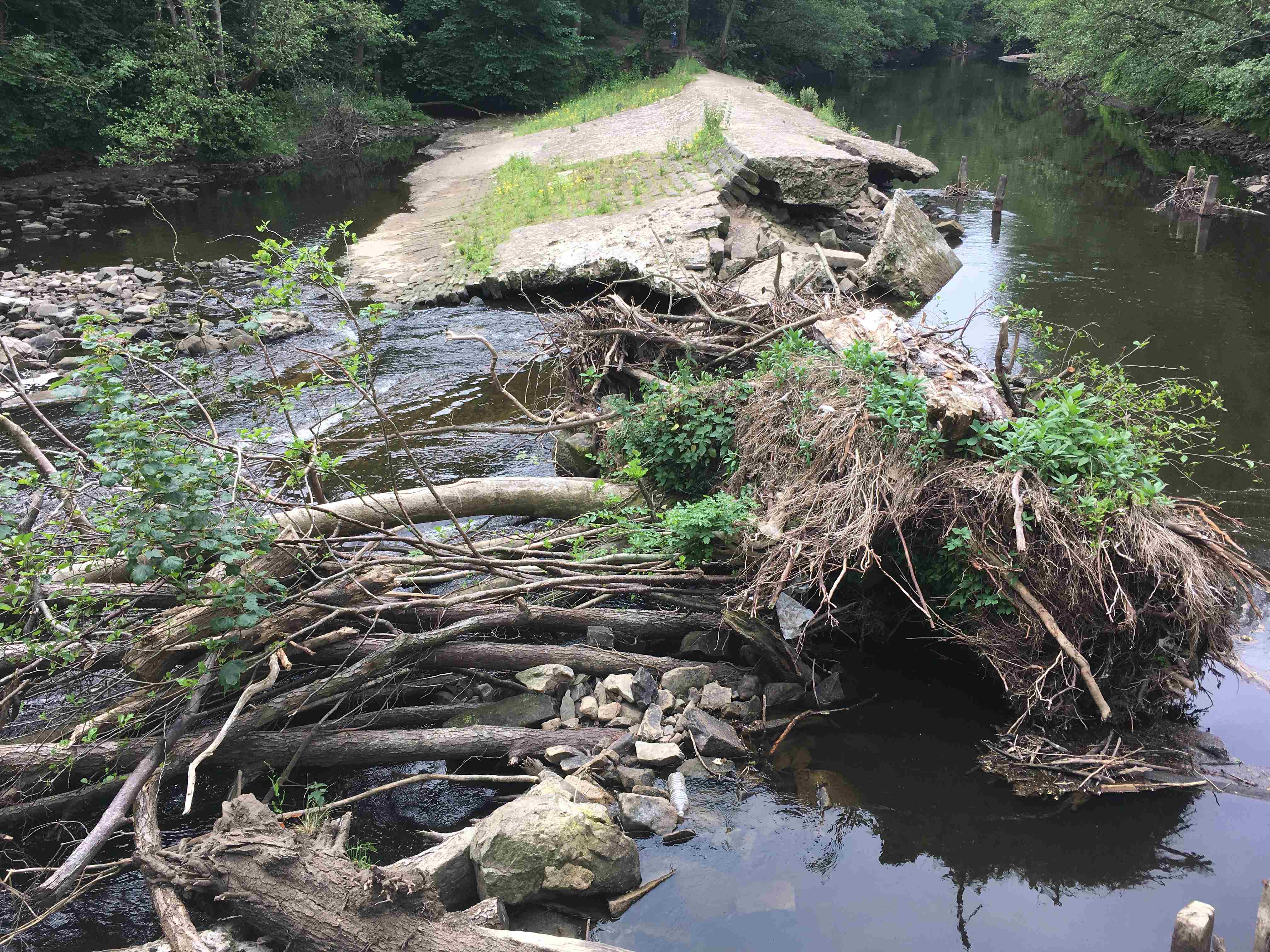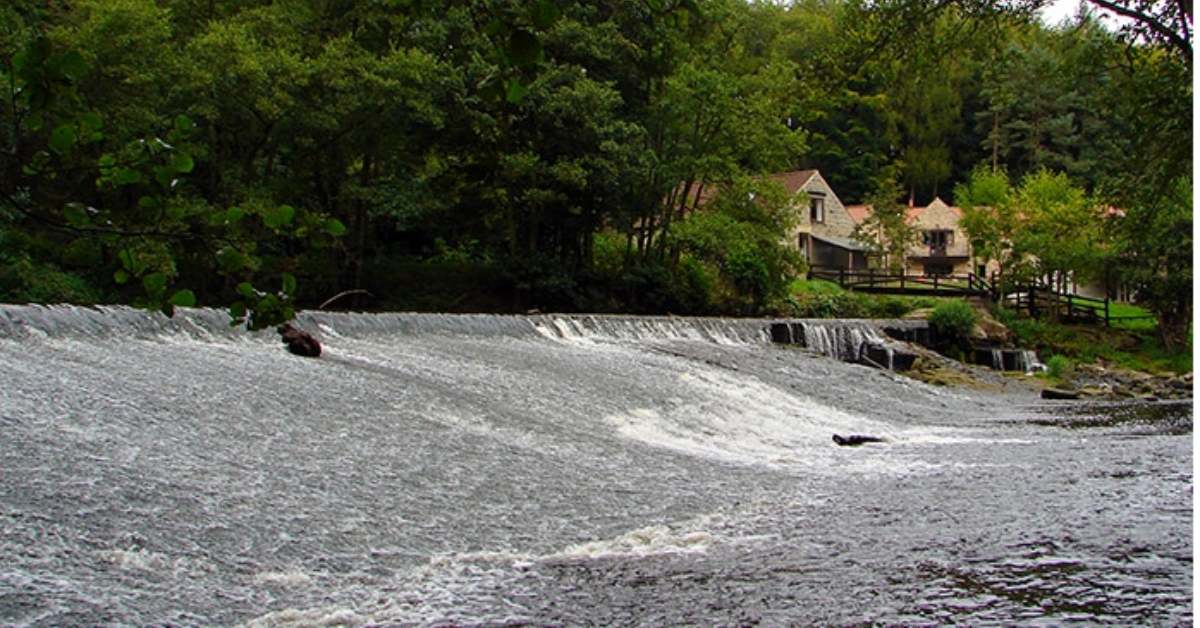The largest weir removal project ever in the UK has begun on the River Nidd at Scotton.
The scheme, which costs about 80,000 euros, will open up another 18km of river to migratory fish such as salmon, sea trout and European eel.
If Nidd tributaries are also included then 35km of rivers will be made available for salmon and sea trout spawning.
The project is being led by river conservation charity the Wild Trout Trust and funded by the European Open Rivers Programme – a grant-giving organisation dedicated to restoring rivers.
It started last week with the creation of an access ramp down to the weir and is expected to get underway properly this week. Work removing the dam is expected to last up to two weeks before further work restoring the bank takes place.
Scotton Weir is at the entrance to Nidd Gorge, a designated Area of Outstanding Natural Beauty.
It was built at the end of the 18th century to power the nearby mill. At 75m wide and 4m high, it is thought to be the largest weir removal project ever in the UK.

The weir breached in the floods of 2019 so is already partly demolished. Leaving it to disintegrate gradually over time would have reduced the risk of bankside damage.
Removing Scotton Weir will benefit more than just migratory fish. All fish move up and downstream to some extent as part of their life cycles and the weir removal will help to restore natural processes to the river.
Currently only 16% of rivers are rated as being in ‘good’ condition by the EU Water Framework Directive. A significant cause of failure is man-made barriers interrupting a river’s flow, such as Scotton Weir on the Nidd.
Jonathan Grey, a part-time professor in practice at Lancaster University who is project managing the Scotton Weir removal for the Wild Trout Trust, said:
“The weir has been impounding about 800m of channel for over 100 years, creating deep, sluggish water in a section of the Nidd gorge where the flow should be swift and shallow.
“Think of a river as a conveyor belt of sediment as well as water. Boulder, cobble and gravel that is vital to the health of the bed of the river has been trapped upstream of the weir, unable to resupply that which has been transported away downstream. So the physical habitat downstream has become simplified, dominated by large boulders.
“Then there is fish passage to consider. All fish have to move up and downstream during different stages of their life for a variety of reasons. The weir has made it nigh on impossible to move upstream, and much more difficult to move downstream, and then only under specific flow conditions, so populations have become fragmented or isolated.”

The weir is already damaged.
Prof Grey said although it was not certain that salmon or sea trout got as far as Scotton Weir, nearby surveys suggested it was “very likely”.
He added:
“There are still more barriers further upstream, the next being at Birstwith 11km away, so there is still work to be done to restore the natural heritage of the river.
“We are aiming to reinstate the natural flow regime to the river by removing the barrier.”
Dr Marie Taylor, operations director for the Yorkshire Dales Rivers Trust, said:
“This project is a great example of partnership working between landowners, experts from the Wild Trout Trust and government bodies, which will deliver benefits to angling groups along the River Nidd as well as wider benefits to nature gained from improving the connectivity of one of Yorkshire’s iconic rivers.”
Read more:





